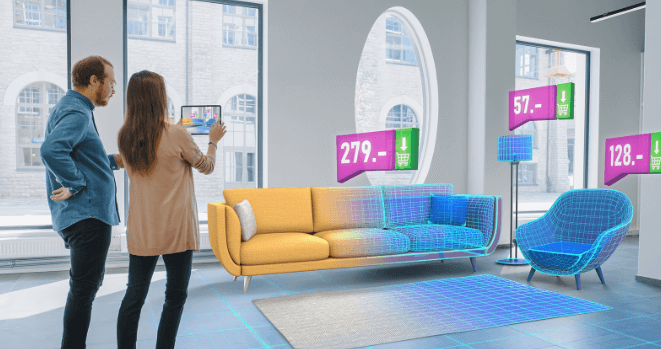How is augmented reality (AR) changing the retail and marketing landscape?

Augmented reality (AR) technology has been a game changer in various industries, but its impact on retail and marketing has been particularly transformative. By overlaying digital information onto the real world, AR offers unique experiences that blend the virtual and physical realms, leading to new ways for brands to engage consumers and influence purchasing decisions. This article delves into the various ways AR is reshaping the retail and marketing sectors.
Understanding Augmented Reality in Retail and Marketing
Augmented reality involves the integration of digital elements into the real world, enhancing one’s perception of reality through devices like smartphones, tablets, or AR glasses. In retail and marketing, this technology can transform how products are showcased, how brands interact with consumers, and even how purchases are made.
Enhancing Customer Engagement through AR Experiences
One of the primary benefits of AR in retail is its ability to increase customer engagement. Through interactive experiences, customers can try products virtually before buying them. For example, furniture retailers use AR to allow customers to visualize how a piece of furniture would look in their own home before making a purchase decision.
Boosting Conversion Rates with Virtual Try-Ons
Fashion and beauty sectors have particularly benefitted from AR through virtual try-ons. Customers can see how clothes, accessories, or makeup products look on them through their smartphone cameras, which in turn has shown to significantly boost conversion rates as it reduces the uncertainty involved in online shopping.
Personalizing Shopping Experiences with AR
AR technology enables highly personalized shopping experiences that cater to individual preferences and needs. For instance, through AR, a customer can see how a pair of glasses fits their face shape or how a certain paint color changes the ambiance of their room, tailored specifically to their personal environment.
Streamlining Operations with AR Tools
Beyond customer-facing features, AR is also revolutionizing back-end operations in retail. For example, AR can assist in inventory management by enabling workers to identify and locate products more efficiently within a warehouse using AR-enabled glasses or screens.
Innovative Marketing Campaigns Using AR
Marketing campaigns using AR create memorable experiences that are more likely to engage customers and generate buzz. Brands can create interactive advertisements that allow consumers to explore features of a product through AR before making a purchase decision, thus deepening the consumer’s connection to the brand.
Challenges and Considerations in Adopting AR
Despite its benefits, the integration of AR into retail and marketing strategies comes with challenges. These include high costs of technology development, the need for consumer education, and privacy concerns related to data collection through AR applications.
The Future of Retail and Marketing with AR
As technology advances, the scope of AR in retail and marketing will continue to expand. This could include more personalized and context-aware promotions, advanced analytics for tracking customer engagement, and even more seamless integration between physical and digital shopping experiences.
Conclusion
Augmented reality is not just a technological innovation; it is a powerful tool that is reshaping the foundation of how retail and marketing operate. By providing immersive and interactive experiences, personalizing customer interactions, and streamlining operations, AR holds the potential to significantly enhance both consumer satisfaction and business efficiency. As we look to the future, the integration of AR into retail and marketing strategies will undoubtedly continue to grow, further changing the landscape of how businesses interact with their customers.






